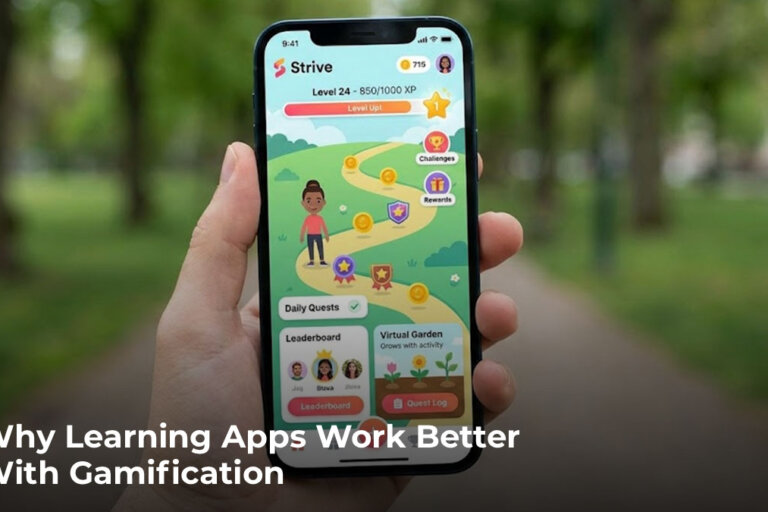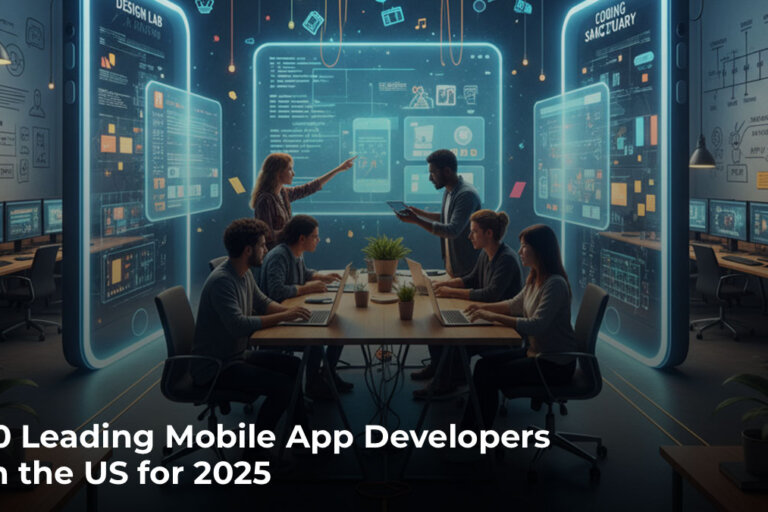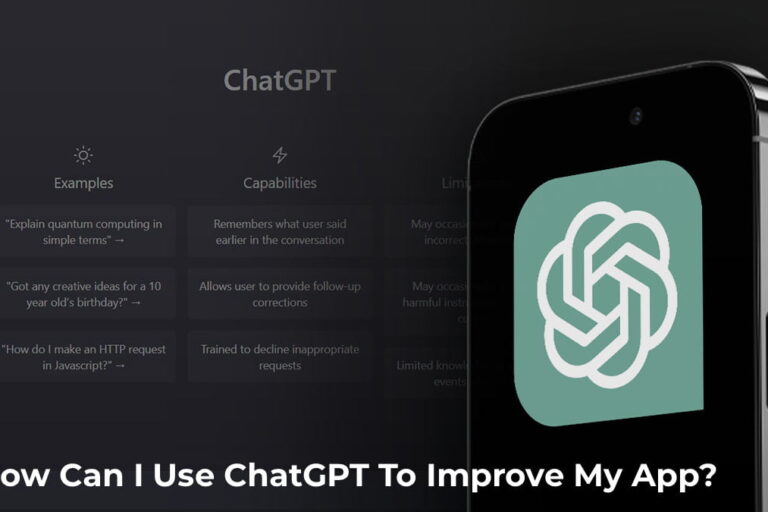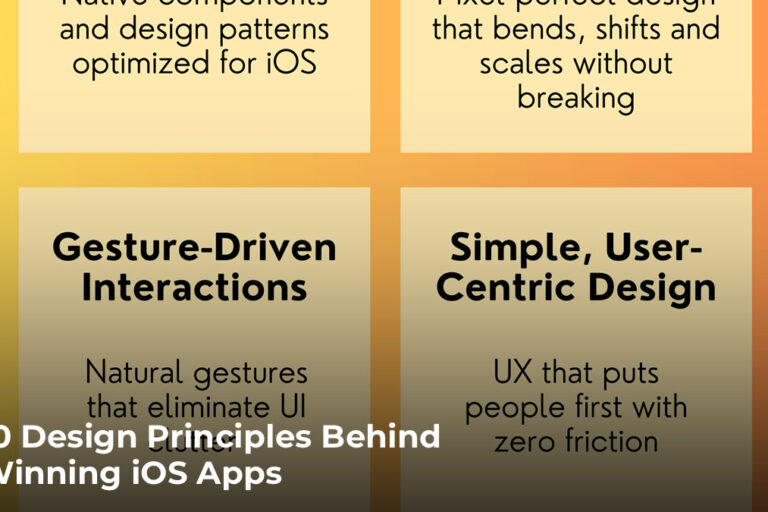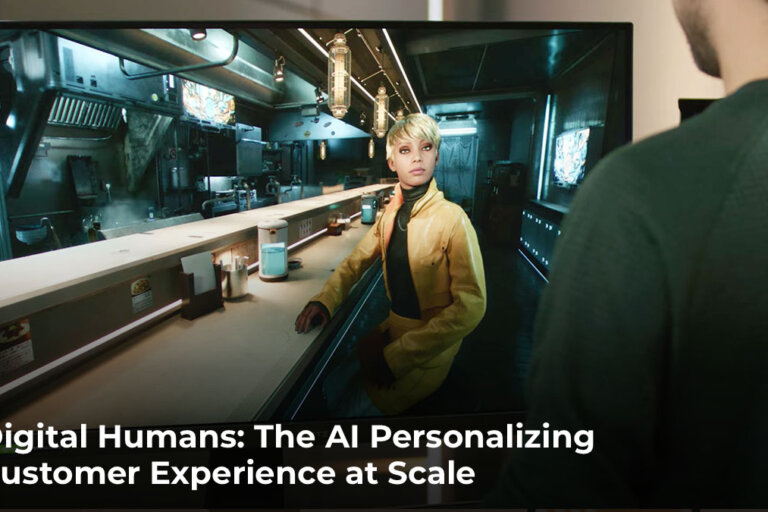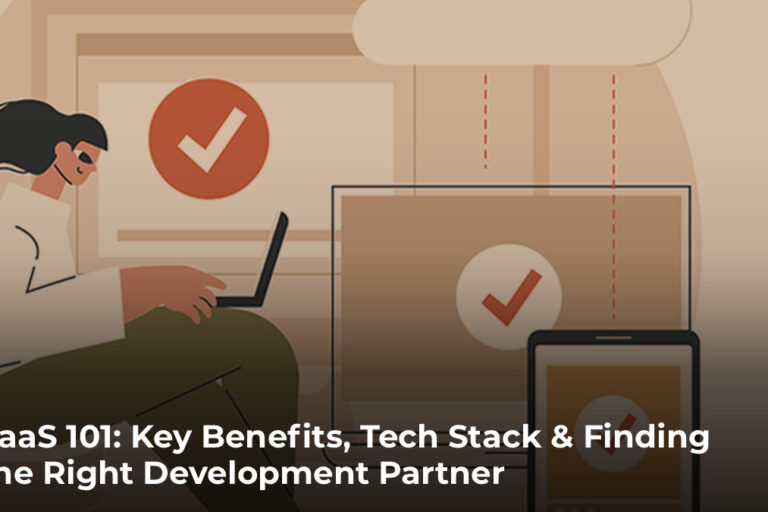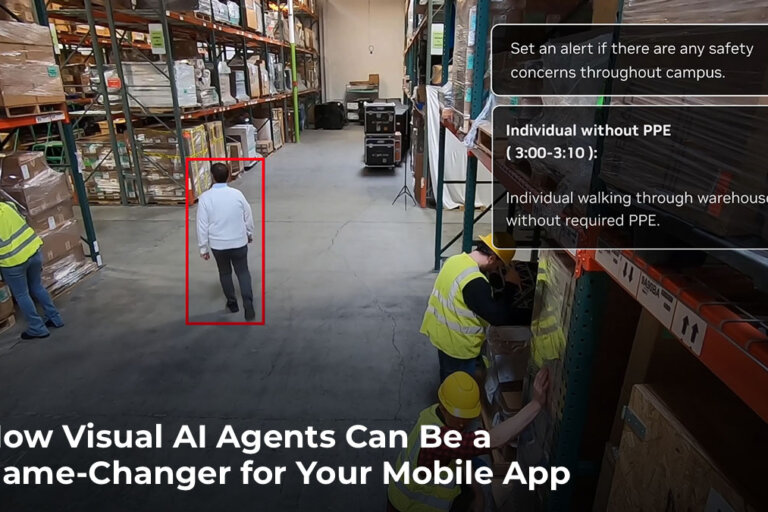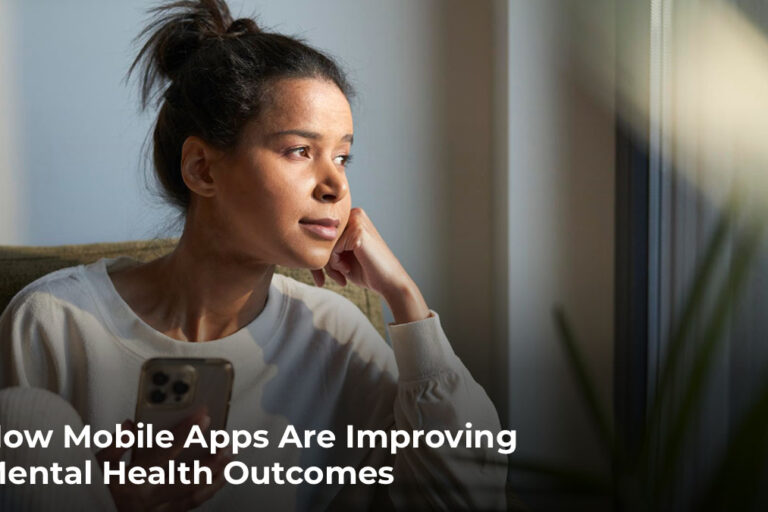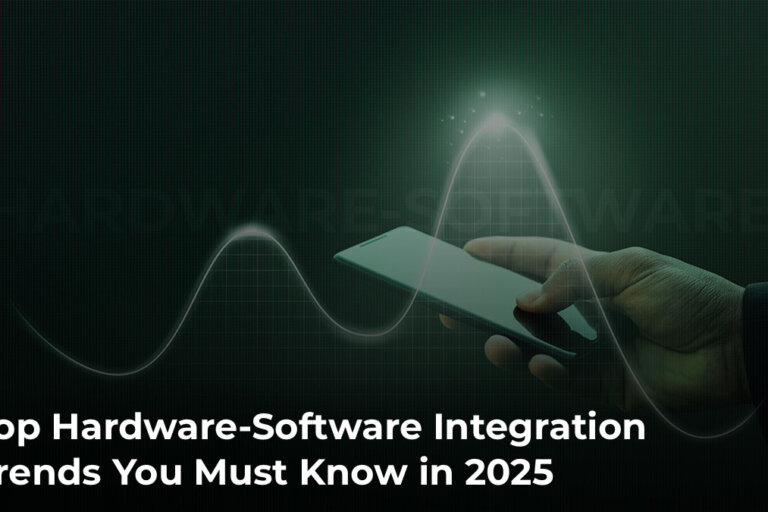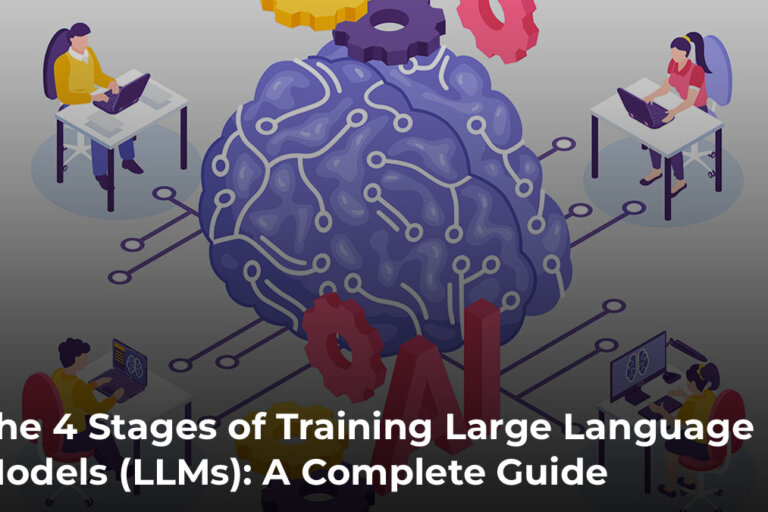How Visual AI Agents Can Be a Game-Changer for Your Mobile App
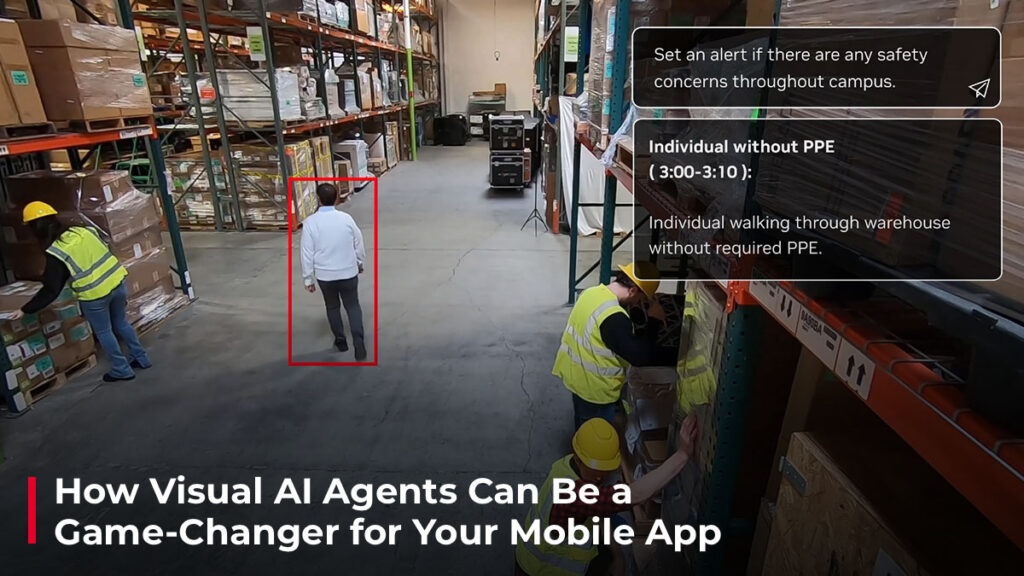
Imagine opening an app and there is a friendly face waiting for you, not a static chatbot or a bunch of buttons, but a lifelike face, like a virtual assistant. They ask how they can help, maybe guide you through a product or explain a feature, just like someone would in an actual store. Doesn’t that sound interesting?
Yes, we’re stepping into a new era of digital interactions through visual AI agents, where things are going to get personalized and more human. This is just one example.
And believe it or not, many companies are already using AI visual agents across a wide range of applications to enhance the capabilities of a number of existing AI solutions and to pave the way for even more innovations down the road.
If you’re just hearing about this tech or thinking of implementing an interactive visual AI agent into your mobile apps, then this blog is just for you.
What is a Visual AI agent?
Visual AI agents, also called as vision AI agents or video analytics AI agents, are intelligent software programs designed to capture, understand and interpret visual content such as images, videos, and any text they contain, in real-time. Unlike traditional image processing tools, Visual AI agents can actively monitor their surroundings, analyze what they see, generate insights, and improve their performance over time through continuous learning.
And, the most interesting part is that they can also make necessary tweaks in their workflow to deliver accurate insights. In other words, while humans set the end goal, the AI agent figures out the smartest way to get there on its own. This makes them highly adaptable, reliable, and capable of operating with minimal human intervention.
So, how do they do this?
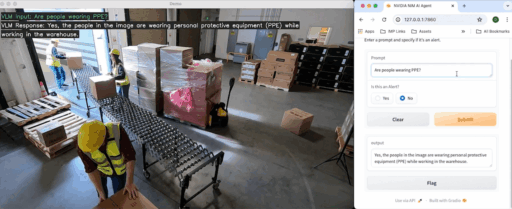
Visual AI agents blend computer vision capabilities with sophisticated models trained to understand both images and language. This combo helps them understand both the visuals and the context behind them, enabling advanced video analytics through a deeper interpretation of complex real-world scenarios.
In essence, AI visual agents are smart systems that act like knowledgeable assistants, engaging with users through question-and-answer interactions based on video or image inputs. It’s not just about recognizing what’s in a picture, but they can actually get what’s going on, what’s wrong in them, and can communicate about it to the user using natural language.
Let’s say a truck gets into an accident and starts causing a major traffic jam. Now, if there’s a vision AI agent in play, it can instantly spot where the accident happened, figure out the vehicle and its owner, see which lanes are blocked, alert traffic authorities, suggest alternate routes to drivers nearby, and even call emergency services if things look serious.

This level of advanced visual intelligence to perceive, interpret and respond is a total game changer, especially for mobile apps that rely on vision-based features. Whether it’s streamlining workflows or automating complex tasks, visual AI agents are opening the door to a whole new level of smart, intuitive user experiences.
Simply put, if you are dealing with visual data and need fast, data-driven decisions to improve outcomes and keep things running smoothly, vision AI agents are the way to go.
Top Ways Vision AI Agents Are Powering the Future of Mobile Apps
Vision AI agents are already making waves across industries like healthcare, retail, manufacturing, and autonomous systems by bringing a whole new level of intelligence and efficiency to the table. Now, it’s time to bring that same innovation to mobile apps. Here’s how you can integrate AI vision agents into your app and deliver the kind of smart, seamless experiences today’s users expect and demand.
Vision AI Agents for 24/7 Customer Support Service
With the popularity of the digital universe expanding at warp speed, customer queries have become a non-stop phenomenon. And while your support team might be awesome, they’re still human. Their capacity is inherently limited by factors like fatigue, overwhelming demand, and potential oversight during peak periods.
In such cases, vision AI agents can be game-changers as they are designed to seamlessly manage hundreds, even thousands, of customer queries around the clock. They operate with unwavering consistency, impartiality, and virtually limitless scalability to ensure continuous service delivery.
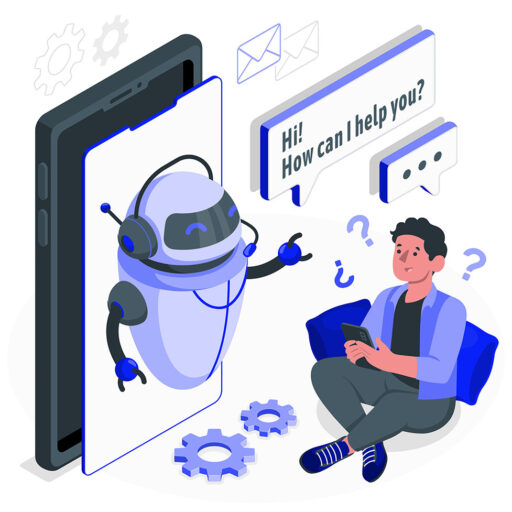
By integrating AI agents into your mobile app, you ensure your business is always available, no matter the hour or time zone. In fact, 64% of users say 24/7 access to AI virtual assistants is one of the most valuable features a mobile app can offer. This eliminates wait times, which are a key frustration point for many users. According to Emplifi, roughly 24% of customers report they would choose not to engage with a brand again following a negative service experience.
Beyond improved accessibility, AI agents are also cost-effective. Businesses report 25 to 30% reductions in customer service expenses after implementing AI solutions. Even more impressively, up to 90% of routine inquiries can be efficiently resolved by visual AI agents without any need for human intervention.
Take Erica, for example, Bank of America’s personal AI assistant built into their mobile app. It was created to help manage the flood of customer queries that were previously handled by humans. Since then, Erica has seriously stepped up the game, handling over 1 billion interactions on its own. That kind of scale has made a real difference, leading to a 17 per cent drop in call center traffic and giving both customers and support teams a smoother, faster experience.
Context-aware support
Vision AI doesn’t wait for a customer to hit “Submit.” By analyzing screenshots, camera feeds, or uploaded photos, it knows exactly where users are struggling and intervenes with targeted guidance in real-time even before frustration turns into a complaint.
For example, Sophie, an autonomous multisensory AI agent trained on your brand’s knowledge base can provide situation-based customer support like a human expert. Be it a hardware installation guide, rectifying a temporary glitch, inquiring about a warranty or even ordering a part replacement, the vision agent recognizes the visuals and provides dynamic support and guidance in a matter of seconds.

Image-Based Search and Instant Product Discovery
Nowadays, when people see something they like, whether it’s a cool jacket, a lamp, or a pair of shoes, their first instinct is to snap a pic and find out where to get it. Visual AI agents make that possible. With just a photo upload or a quick scan using the phone camera, users can instantly search for similar or matching products right inside your app.
It’s like giving your app visual intuitions to recognize what users are looking for and guide them directly to it. This kind of visual assistance is perfect for impulse shoppers or anyone who’s curious about a product they spotted in real life or online.
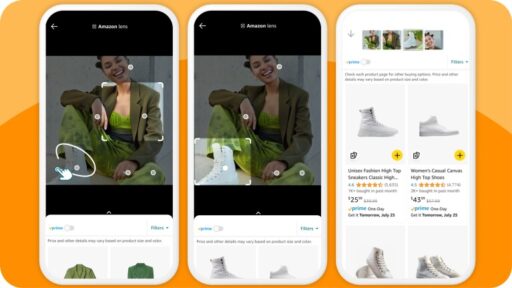
eCommerce platforms, fashion apps, and home decor brands are already tapping into this tech to deliver faster, smarter, and more personalized shopping experiences.
One great example is Amazon Lens, a vision AI agent that helps you identify objects in a photo and recommend the closest match or even better alternatives, directly within the app. It doesn’t just improve the user experience; it streamlines the entire shopping journey, making it quicker, easier, and far more convenient for customers while helping businesses connect with the right audience at exactly the right time.
Sentiment & Emotion Analysis
AI visual agents are quickly becoming some of the most powerful tools in modern app development. They’re not just great at recognizing objects and patterns but they also possess the ability to interpret human emotions by analyzing facial expressions, body language, and contextual cues within visual content. This ability, known as visual reasoning, is what allows AI to go beyond simple image recognition and actually understand what’s going on emotionally.
One of the most exciting breakthroughs in this space is multimodal sentiment analysis. It lets visual AI agents process real-time emotional data by combining what they see with contextual cues. They can detect subtle changes in facial expressions or posture, allowing them to track emotional shifts as they happen. This leads to a much richer and more human-like understanding of interactions.
Take customer service apps as an example. During video calls, vision AI agents can pick up on a user’s emotional state and help the system respond with more empathy. These video analytics tools can detect frustration, curiosity, or satisfaction, and adapt the app’s behavior accordingly. They can even predict user interests or flag potential issues before they escalate, which helps improve the experience without the user having to say a word.
This kind of intelligence is also making a big impact in other areas. In remote usability testing, AI can observe how users interact with apps and catch signs of confusion or hesitation. In educational apps, it can monitor student engagement and provide insights that help improve learning outcomes. It’s even being used in workplace communication tools to assess employee morale based on visual cues during virtual meetings.
Mental health apps are another important space where visual reasoning is making a difference. These apps can identify signs of emotional discomfort or distress and provide timely support. For instance, MoodCapture is a mobile app that uses AI to analyze facial cues and detect signs of depression. It’s one of many emerging tools aimed at improving mental health outcomes through real-time emotion detection. To learn more on how AI-powered mobile apps are improving mental health outcomes, click here.
Of course, all these experiences hinge on user consent. When users opt-in, AI’s ability to read and respond to emotional cues can add a powerful layer of empathy to digital interactions.
Real-Time Safety Alerts
AI vision agents are redefining how we approach safety. By tapping into on-device cameras, live video feeds, and sensor data through mobile apps, these smart systems act as real-time safety companions that understand the user’s surroundings and instantly raise safety alerts when something feels off.
In self-driving cars like Tesla Autopilot, advanced Vision AI agents can monitor both the vehicle and its environment through built-in cameras and sensors. This helps the system make smarter, safer driving decisions under active human supervision.
The same kind of intelligence is now found in modern dashcams and vehicle-connected mobile apps. For instance, take the AnyConnect Smarter AI™ Dashcam, a vision AI agent that is integrated into a vehicle’s cabin with an anti-tampering design. Equipped with three wide-angle cameras, these video analytic AI agents can keep track of road conditions, detect obstacles, monitor lane drifting, speeding, and tailgating, and assess how the driver is doing. They can even use the in-cabin camera to detect signs of fatigue or distraction, like frequent yawning or looking away from the road. When a risk is detected, the system responds instantly with audio alerts or on-screen visual cues, helping prevent potential accidents before they happen.
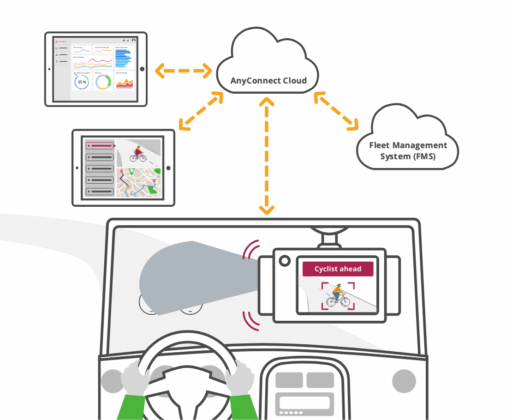
Beyond vehicles, visual AI agents are playing an increasingly important role in personal safety. Activate “safety mode” on your app, and the AI begins monitoring your surroundings in real-time. Whether you’re walking at night, in a parking garage, or working in a remote location, it’s always scanning for unusual or dangerous activity. If it notices something, it can send an alert, trigger an alarm, start recording, and even send your live location and video to your emergency contacts. In some cases, it can automatically contact emergency services for you.
In workplaces, AI vision agents are adding a new layer of intelligence to safety and operations. They can detect protocol violations, spot security breaches, or recognize when objects are blocking safe workflow areas. Alerts are sent directly to supervisors through enterprise apps, complete with context, snapshots, and predictive maintenance insights. This allows teams to respond quickly and prevent small issues from becoming serious problems.
Virtual Beauty Assistance And Product Recommendations
The beauty industry is experiencing a significant transformation, driven by exciting technological advancements worldwide, and AI visual agents are right at the center of it. With mobile apps becoming the go-to place for beauty exploration, these smart systems are making it easier than ever for users to try before they buy.
By combining the powers of computer vision, video analytic AI agents, and augmented reality (AR), mobile apps can now offer interactive features like virtual try-ons. Users can swipe through a range of products, apply them virtually to their faces, and instantly see what works for their unique features. Whether it’s testing lipstick shades or matching foundation to skin tone, you can digitally experiment with products with just a tap.
This offers consumers incredible convenience with no mess, no store visits, no hygiene worries – just endless experimentation with tons of products. For businesses, this translates directly into a significant boost in engagement, improved conversion rates, and stronger customer loyalty.
Take Sephora’s Virtual Artist as an example. This vision AI agent, embedded in the Sephora app, lets users try out makeup in real-time and get personalized suggestions based on facial features. It’s a great case of how mobile-first visual AI is reshaping the beauty experience.
Beyond just trying on products, visual AI agents can also provide advanced skin analysis. They can actually become your personal beauty consultant, offering personalized product recommendations and even AI-driven skin diagnostics. They do this through facial landmark detection, recognizing your facial structure, spotting any skin irregularities, identifying your skin type, and even gauging hydration levels. Plus, these vision AI agents get smarter with every interaction, enabling them to constantly refine their suggestions and ensure you get recommendations that truly match your skin type and evolving needs.
Final Words
In this blog, we’ve explored how AI visual agents are transforming the way mobile apps interact with the world. By using cameras, sensor data, and smart algorithms through mobile app-based solutions, these smart vision agents are bringing powerful visual reasoning capabilities straight to your smartphones. It’s an exciting shift that’s opening up all kinds of new possibilities for mobile app development.
However, as expected, technologies like AI comes with its own set of challenges. Privacy concerns, algorithmic bias, and the potential for emotional manipulation are all important issues that need attention as these agents become more common.
Still, if we approach this thoughtfully and ethically, visual AI agents could help shape a future where mobile apps are not just faster or smarter but also more aware, responsive, and genuinely aligned with human needs.


